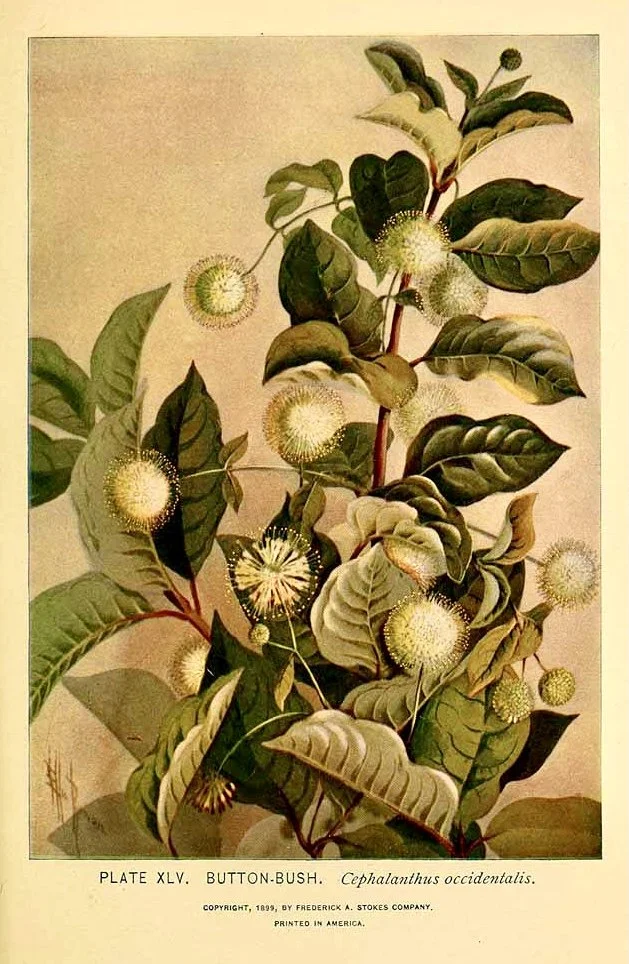Buttonbush
Buttonbush
BUTTONBUSH SEEDS
Cephalanthus occidentalis
This shrubby deciduous tree is native to the damp places of North America and possesses one of the most charming “flowers" on the planet, appearing as creamy white globes so perfect as to seem improbable, haloed in protruding stamens and styles. Blooms over several months. Sweet fragrance is reminiscent of Carolina jessamine. So very charming. Highly recommended for growing in wetlands or damp hedgerows and around natural streams and ponds. Tolerates seasonal standing water. Very nice with winterberry and pussy willows and colorful dogwoods. Can grow quite large, up to 10' in the Northeast, or be pruned to shape in late autumn through winter.
Seeds germinate without any special treatment, although germination can sometimes be erratic. Press seeds into moist soil and just barely dust with fine vermiculite as the seeds need light to germinate. Mist generously and cover with plastic to maintain moisture. Kept at room temperature in bright light seeds germinate over several weeks. Prick out seedlings with true leaves to grow on in deep 6" pots at room temperature in bright light. Water frequently. Harden off before transplanting in spring or autumn in moist soils in full or part sun. Possibly dioecious, so if you hope to collect viable seed in the future plant at least three. Water frequently until established.
Buttonbush is beloved by butterflies and hawkmoths and is typically covered with them during summer months. It is far and away the superior alternative to non-native Buddleja species, although challenging to keep happy in typical garden culture. Consistent moisture is essential. Hardy to at least zone 4.
We cannot recommend using this species for medicinal purposes as it contains the toxin cephalanthin. That said, several historic compendiums indicate that the inner bark of this species was employed by early European settlers as an alternative to quinine and that a sweet fragrant syrup made from the flowers was valued as a “tonic and laxative". Decoction of the leaves is listed as having been used by the Chippewa in the treatment of menorrhagia. Very careful research and extreme caution is recommended.
Packet contains at least 50 seeds.
